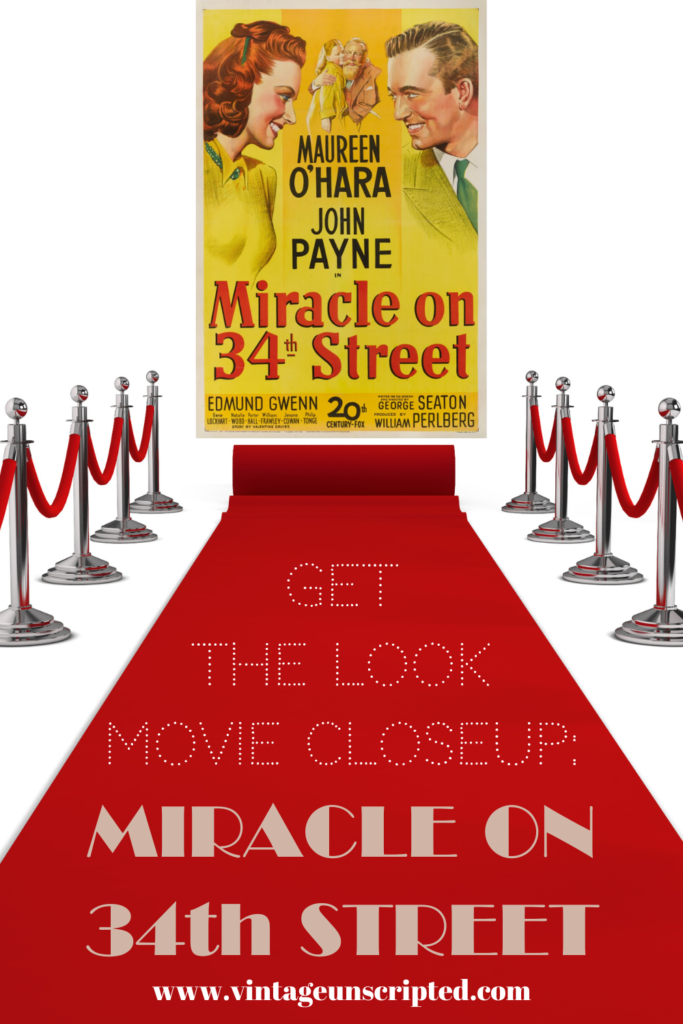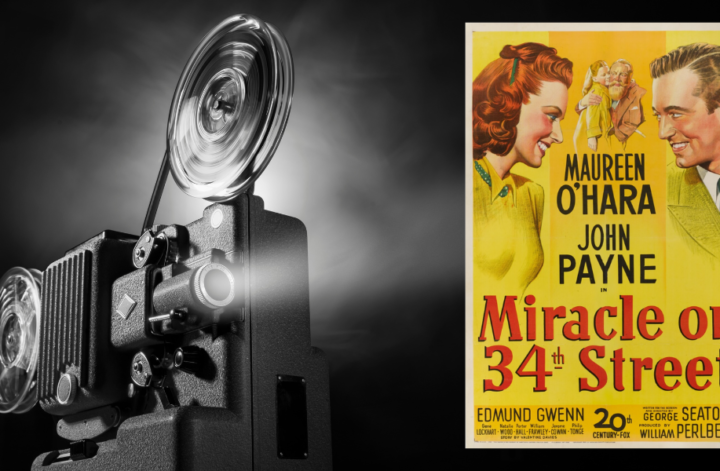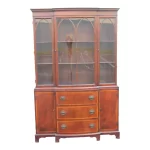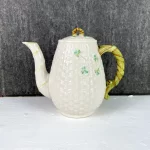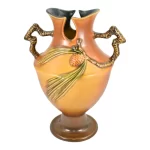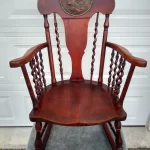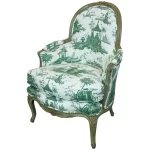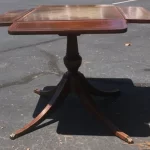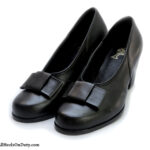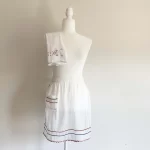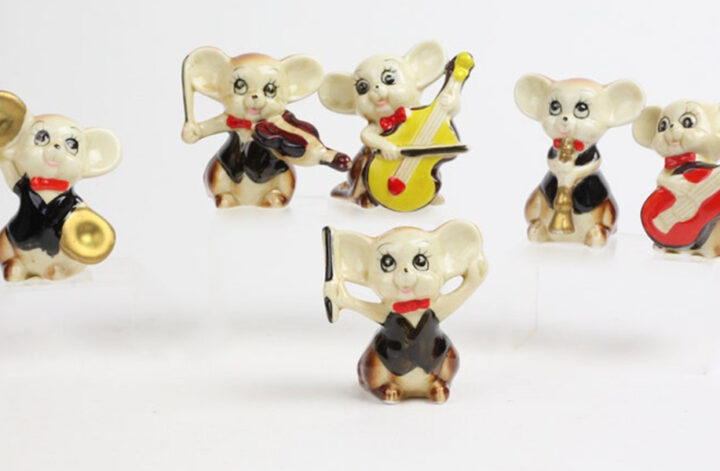Watching holiday movies is a tradition in many households. Picking a favorite can be tough, luckily we don’t have to. Several of the classic Christmas movies were made in the 1940s including It’s a Wonderful Life, Christmas in Connecticut and of course, Miracle on 34th Street.
Originally made in 1947, it was remade in 1994. Both are vintage, but we’re talking about the original version. The one that won three Academy Awards. The one starring Maureen O’Hara, John Payne, Edmund Gwenn, and Natalie Wood as Susan. The movie tells a story about kindness, learning to cooperate with others and believing in miracles.
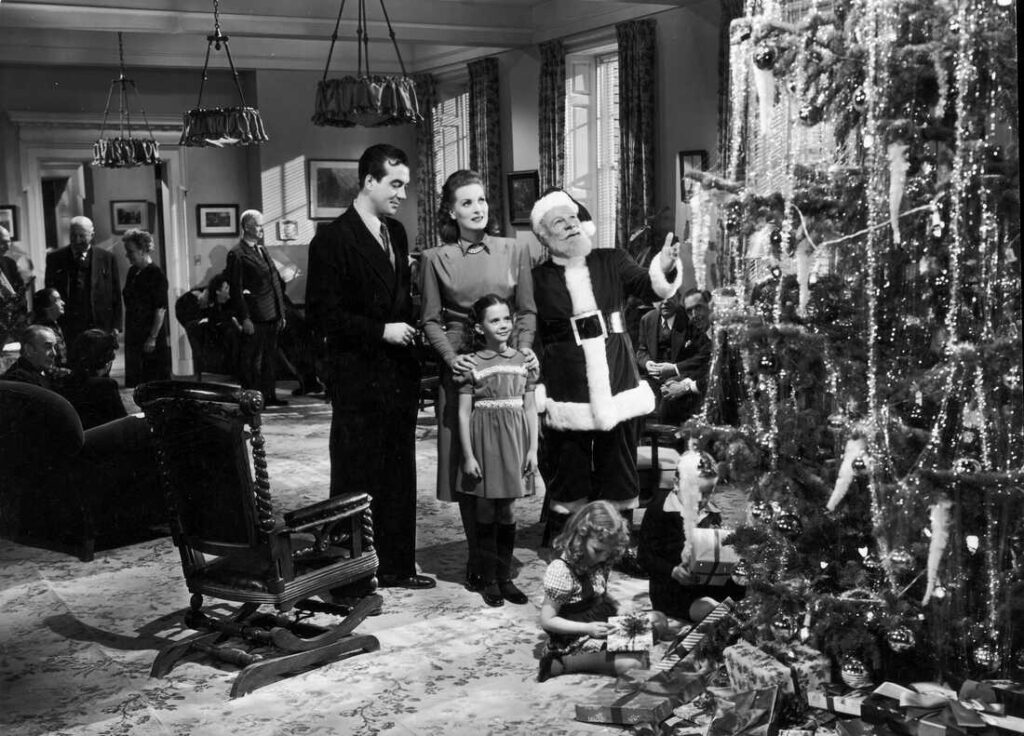
From the single-take shots of the iconic Macy’s Thanksgiving Parade to the tug of war for shoppers between Macy’s and Gimbel’s department stores, the movie includes subjects and methods that were unorthodox at the time. The scenes of the actual parade could not be reshot so 9 cameras were set up to capture the event in real-time. Edmund Gwenn was Santa in the 1946 parade so he could be filmed for the movie. As for Kris Kringle’s marketing strategy of sending customers to the competition, the lesson learned is that of customer satisfaction and working together. Many scenes in the movie were shot in the flagship New York Macy’s store, including those of the Christmas window displays.
For those who may have never seen the original Miracle on 34th Street here’s a synopsis:
When the man who’s scheduled to be Macy’s Santa in the Thanksgiving Day parade shows up drunk, he’s summarily fired and Kris Kringle is promptly hired to replace him. His presentation is so convincing Doris, the event director immediately hired him to work as the store Santa for Macy’s flagship on 34th Street. When Kris directs a shopper to arch-rival Gimbel’s Department Store against instructions, he raises the hackles of Julian, head of the toy department. The shopper is so grateful for Kris’s honest direction, she declares herself a loyal Macy’s customer.
When Doris’s young daughter is brought to visit Santa at the store by her neighbor Fred, she’s struck by Kris speaking Dutch to another girl. Susan has been brought up by her divorced mother to be practical and not believe in Santa. When she confronts Kris, he replies that he is indeed Santa. Doris is so shaken by this she decides to fire Kris. But that backfires as Kris has become overwhelmingly popular. In order to alleviate Doris’s distrust, Julian requests a psychological examination which Kris passes. But when Kris finds out that he’s been considered unstable, he confronts the doctor and in his anger, he strikes him. Kris is conscripted to Bellevue Hospital.
Kris ends up in court trying to prove he really is Santa. When the District Attorney’s own son asserts in court that his father told him Santa is real, he concedes. As the court recesses, Susan writes a letter to Kris to cheer him up. The letter is addressed to the New York Courthouse. When court resumes, Fred, having taken Kris as his client, needs to prove his point that Kris truly is Santa. We’re not going to tell you how he does that, but he does.
And like all good movies, there is a romantic subplot. Throughout the story, Fred and Doris have become closer and…nope, we’re not going to tell you that either.
Now that we know more about the movie, let’s look at some of the set details that make our vintage-loving hearts go pitter-patter.
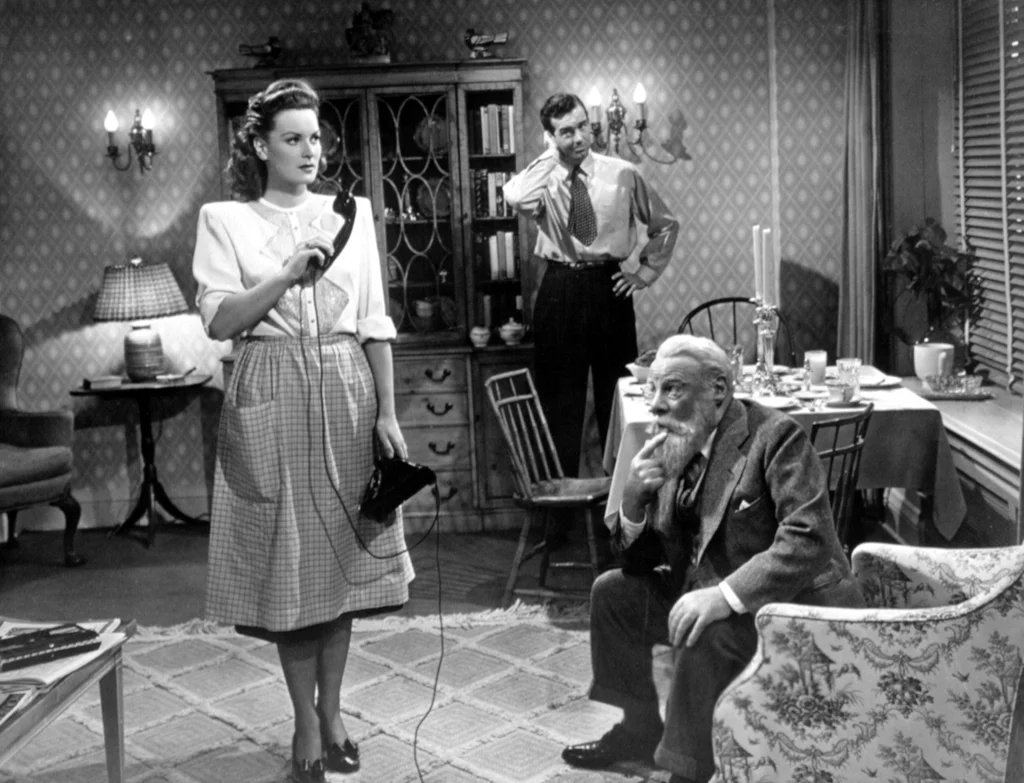
What about the rug and Duncan Phyfe china cabinet? Antique area rugs, unlike oriental rugs, aren’t always a good idea or a good value, but there are enough reproduction rugs out there so you should be able to find one with 1940s style. We can’t see the tea pot on the ledge and we can’t see everything in the hutch, but we bet there might be some Roseville and Hall.
Did you see the barley twist Huntsinger rocking chair? Here is a similar one. Kris is sitting in a toile upholstered chair because toile is both magical and timeless. And we see the Duncan Phyfe table next to the china cabinet and we raise it to two levels.
We have to talk about the gorgeous blouse and shoes Doris is wearing. And the sweet gingham apron, nice and long with seriously deep pockets. This is not a frilly hostess apron, this is a get stuff done apron.
Macy’s and Gimbel’s department stores had a much-storied Herald Square NYC rivalry. Spoiler alert: they don’t anymore. Read about the rivalry in this piece from the Chicago Tribune and Gimbel’s history from The American Business History Center.
If you enjoy our Movie Close-Ups, we have several more here.
